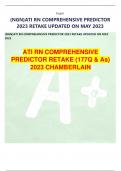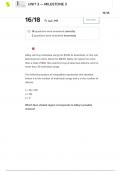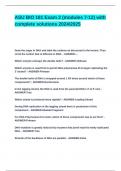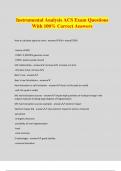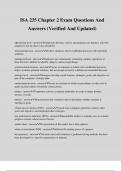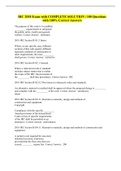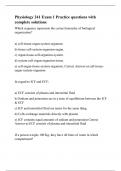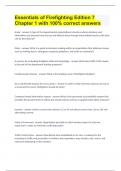to
Exercises in
FUNDAMENTALS OF MODERN VLSI DEVICES, 3rd ed.
published by
Cambridge University Press
Yuan Taur and Tak H. Ning
SOLUTION 1
, Solutions to Chapter 2 Exercises
2.1. From Eq. (2.4),
1 eE / kT
f ( E f E ) ,
1 e E / kT eE / kT 1
and
1
f ( E f E ) .
1 eE / kT
Adding the above two equations yields
eE / kT 1
f ( E f E ) f ( E f E ) E / kT 1.
e 1
2.2. Neglecting the hole (last) term in Eq. (2.19), one obtains
( E c E f )/ kT ( E c E d 2 E f )/ kT
N ce 2N c e Nd .
Treating exp(Ef/kT) as an unknown, the above equation is a quadratic equation with the solution
1 1 8( N d / N c )e( E c E d )/ kT
E f / kT
e .
4e E d / kT
Here only the positive root has been kept. For shallow donors with low to moderate
concentration at room temperature, (Nd/Nc)exp(Ec Ed)/kT 1, and the last equation can be
approximated by
4( N d / N c )e( E c E d )/ kT N d E c / kT
E f / kT
e e ,
4e E d / kT Nc
which is the same as Eq. (2.20). If we compare the above relation with Eq. (2.19), it is clear
that in this case, exp[(Ed Ef)/kT] << 1, and Nd+ Nd or complete ionization.
If the condition for low to moderate concentration of shallow donors is not met, then
exp[(Ed Ef)/kT] is no longer negligible compared with unity. That means Nd+ < Nd (Eq.
(2.19)) or incomplete ionization (freeze-out). [Note that incomplete ionization never occurs for
shallow impurities: arsenic, boron, phosphorus, and antimony at room temperature, even for
doping concentrations higher than Nc or Nv. This is because in heavily doped silicon, the
SOLUTION 2
,impurity level broadens and the ionization energy decreases to zero, as discussed in Subsection
9.1.1.2.]
2.3. (a) Substituting Eqs. (2.5) and (2.3) into the expression for average kinetic energy, one
obtains
( E E f )/ kT
( E Ec ) e dE
K.E. Ec
.
( E E f )/ kT
( E Ec )1/ 2 e dE
Ec
Applying integration by parts to the numerator yields
()kT ( E Ec )1/ 2 e
( E E f )/ kT
dE 3
K.E.
Ec
kT .
1/ 2 ( E E f )/ kT
( E Ec ) e dE 2
Ec
(b) For a degenerate semiconductor at 0 K, f(E) = 1 if E < Ef and f(E) = 0 if E > Ef. Here
Ef > Ec. Therefore,
Ef
( E Ec )3/ 2 dE
3
K.E. Ec
( E f Ec ) .
Ef
( E Ec ) dE 5 1/ 2
Ec
2.4. With the point charge Q at the center, construct a closed spherical surface S with radius r.
By symmetry, the electric field at every point on S has the same magnitude and points outward
perpendicular to the surface. Therefore,
E dS 4r E ,
2
S
where E is the magnitude of the electric field on S. 3-D Gauss’s law then gives
Q
E ,
4 si r 2
which is Coulomb’s law.
Since E =dV/dr, the electric potential at a point on the sphere is
Q
V ,
4 si r
SOLUTION 3
, if one defines the potential to be zero at infinity.
2.5. (a) Construct a cylindrical Gaussian surface perpendicular to the charge sheet as shown:
E
A
Qs
E
The cross-sectional area is A. At the two ends of the cylinder, the electric field E is
perpendicular to the surface and pointing outward. Along the side surface of the cylinder, the
field is parallel to the surface, so EdS = 0. For an infinitely large sheet of charge, E is uniform
across A from symmetry. Therefore,
E dS 2AE .
S
The charge enclosed within the surface is QsA. From Gauss’s law, one obtains E = Qs/2.
(b) The field due to the positively charged sheet is Qs/2 pointing away from the sheet.
The field due to the negatively charged sheet is also Qs/2, but pointing toward the negatively
charged sheet. In the region between the two sheets, the two fields are in the same direction and
the total field adds up to Qs/, pointing from the positively charged sheet toward the negatively
charged sheet. In the regions outside the two parallel sheets, the fields are equal and opposite to
each other, resulting in zero net field.
2.6
SOLUTION 4

